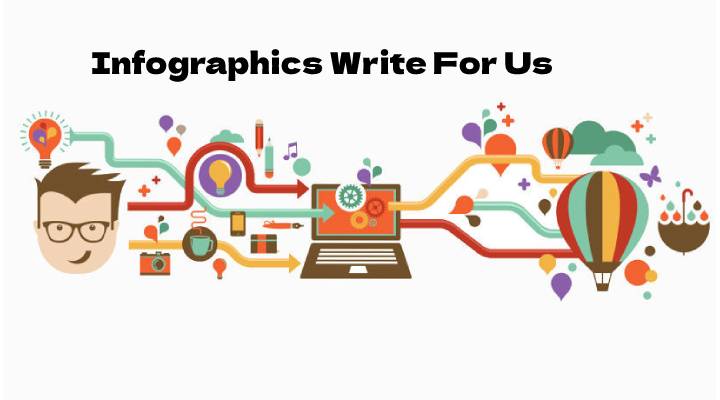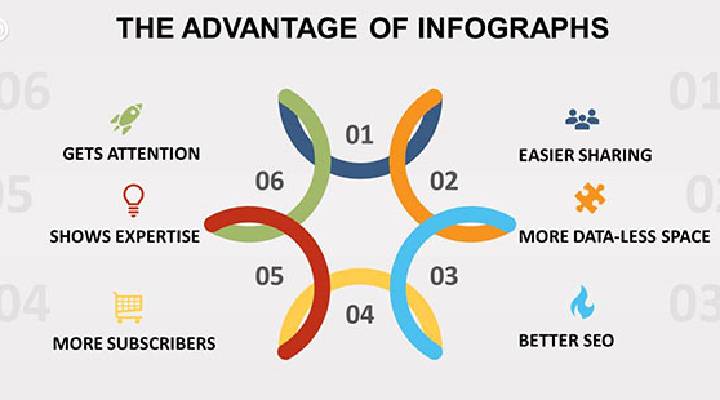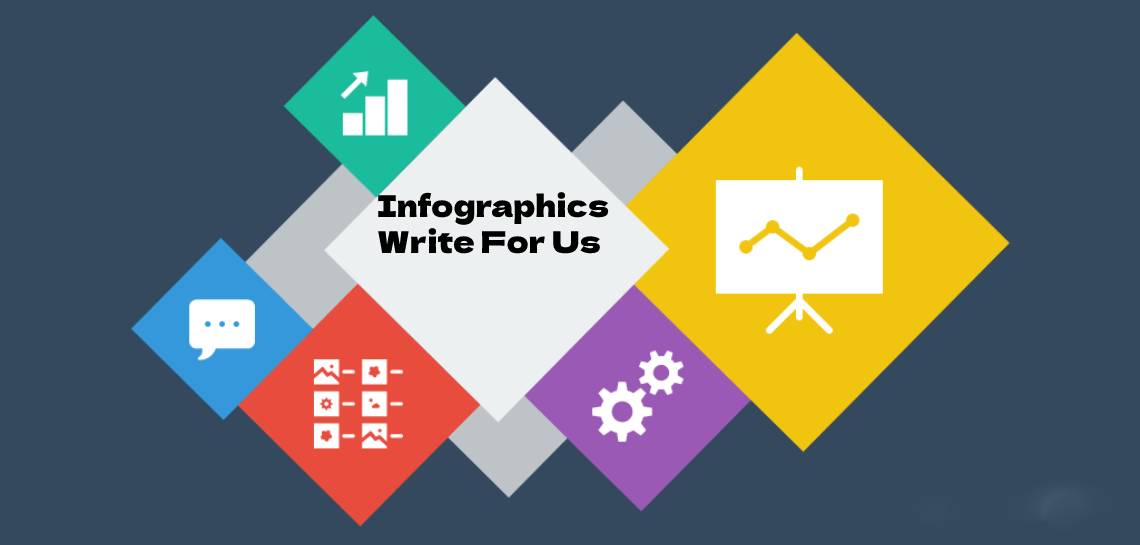Infographics Write For Us
Infographics Write For Us-We know them from science, for example. Those are called quantitative information graphics and are structured schematically. However, the increasing dissemination of knowledge on websites has made infographics popular outside of universities as well.
Infographics are pictorial representations that summarize or even convey texts or other content (information). In addition to graphic elements, they can contain explanatory or commentary text passages. Infographics help to present complex data in a space-saving and transparent manner.
Therefore, the graphic elements include symbols, pictograms, typographically designed texts (variation of font, size, and color), and images. The images can have an illustrative or documentary function, for example.
What data are Infographics suitable for?

Infographics convey complex processes, relationships, and facts in an easy-to-understand way. Four types of information are suitable for presentation as an infographic:
- Hierarchical information such as work or production processes, organizational charts, company or offer structures, etc.
- Chronological information such as histories in curriculum vitae, company history, product development, strategies of any state, content summaries, timelines, and much more.
- Geographical information such as locations, demographics, networks, the origin of individual components, and so on.
- Numbers and sizes and number and size ratios, i.e., numbers and sizes compared to one another, can be ideally represented in diagram form.
But that’s not all. Therefore, in advertising, infographics show individual components of offers or products and their variants. That applies to both physical goods and services.
And also, they do a good job even in a literary context. The characters involved, the course of action and the book’s locations can be made manageable with the help of an infographic. The artist Giorgia Lupi uses the author JK Rowling to show how even a complete work can represent in an infographic.
Why do Infographics Work so Well?
However, most of the impressions that the human brain evaluates come from the optic nerves. Therefore, the eyes provide it with the most incredible amount of information, with visual stimuli consisting of several components. Shape, color, size, texture are just a few aspects that make up every picture. Since these components are perceived and processed simultaneously, we speak of simultaneous (simultaneous) representation or perception.
Therefore, our brain ideally designs to grasp visual representations quickly, at a glance. It is different with texts and also, the stringing together of words is a successive (step-by-step) form of expression of information. That means that it has to work its way up bit by bit to open up the connection for our brain. That takes much longer and is more strenuous.
What is the Advantage of Infographics on the Internet?

When searching for relevant information, website visitors decide within 2 to 4 seconds whether to read the article or continue surfing. That is why it makes sense to capture the interest with an eye-catcher.
However, if the infographic contains essential information, a viral marketing effect often occurs. Because infographics are suitable for social media and the sharing of posts, they build valuable backlinks on the one hand. On the other hand, they spread without further effort on the author’s part and develop into free self-runners. And also, in advertising campaigns or contributions for content marketing, this property of infographics is considerable, often even monetary, advantage.
How to Submit Your Articles?
To submit guest posts, please study through the guidelines mentioned below. You can contact us finished the website contact form or at contact@marketing2business.com
Why Write for Marketing2Business – Infographics Write For Us

- If you write to us, your business is targeted, and the consumer can read your article; you can have huge exposure.
- This will help in building relationships with your beleaguered audience.
- If you write for us, the obvious of your brand and contain worldly.
- Our presence is also on social media, and we share your article on social channels.
- You container link back to your website in the article, which stocks SEO value with your website.
Search Terms Related to Infographics Write for Us
- Infographic
- Data visualization
- Information graphic
- Visual communication
- Data storytelling
- Statistical graphic
- Chart
- Graph
- Diagram
- Timeline
- Pictogram
- Ideogram
- Flowchart
- Venn diagram
- Mind map
- Tree diagram
- Pie chart
- Bar chart
- Line chart
- Scatter plot
Search Terms for Write For Us
- Infographics Write for us
- Guest Post Infographics
- Contribute Infographics
- Infographics Submit post
- Submit an article on Infographics
- Become a guest blogger at Infographics
- Infographics writers wanted
- Suggest a post on Infographics
- Infographics guest author
Article Guidelines on Marketing2Business – Infographics Write For Us
- The author cannot be republished their guest post content on any other website.
- Your article or post should be unique, not copied or published anywhere on another website.
- The author cannot be republished their guest post content on any other website.
- You cannot add any affiliates code, advertisements, or referral links are not allowed to add into articles.
- High-quality articles will be published, and poor-quality papers will be rejected.
- An article must be more than 350 words.
- You can send your article to contact@marketing2business.com
Related pages
Accountant Write For Us
Affinity Marketing Write For Us
Air Conditioner Write For Us
Apache Spark Write For Us
Artificial Intelligence Write For Us
Business Finance Write For Us
Business Growth Write For Us
Blockchain Write For Us
Business App Write For Us
Business Finance Write For Us
Chat Rooms Write For Us
Business Tips Write For Us
Business Sites Write For Us
Cryptocurrency Write for Us
Customer Support & Services Write For Us
DOGE Write For Us,
Direct Marketing Write For Us
DevOps Write For Us
Digital Marketing Write For Us
Economic Development Write For Us
Equity Write For Us
Drip Marketing Write For Us
Ethereum Write For Us
Entrepreneur Write For Us
Email Marketing Write For Us
Human Resources Write For Us
Finance Write For Us, Guest Post


